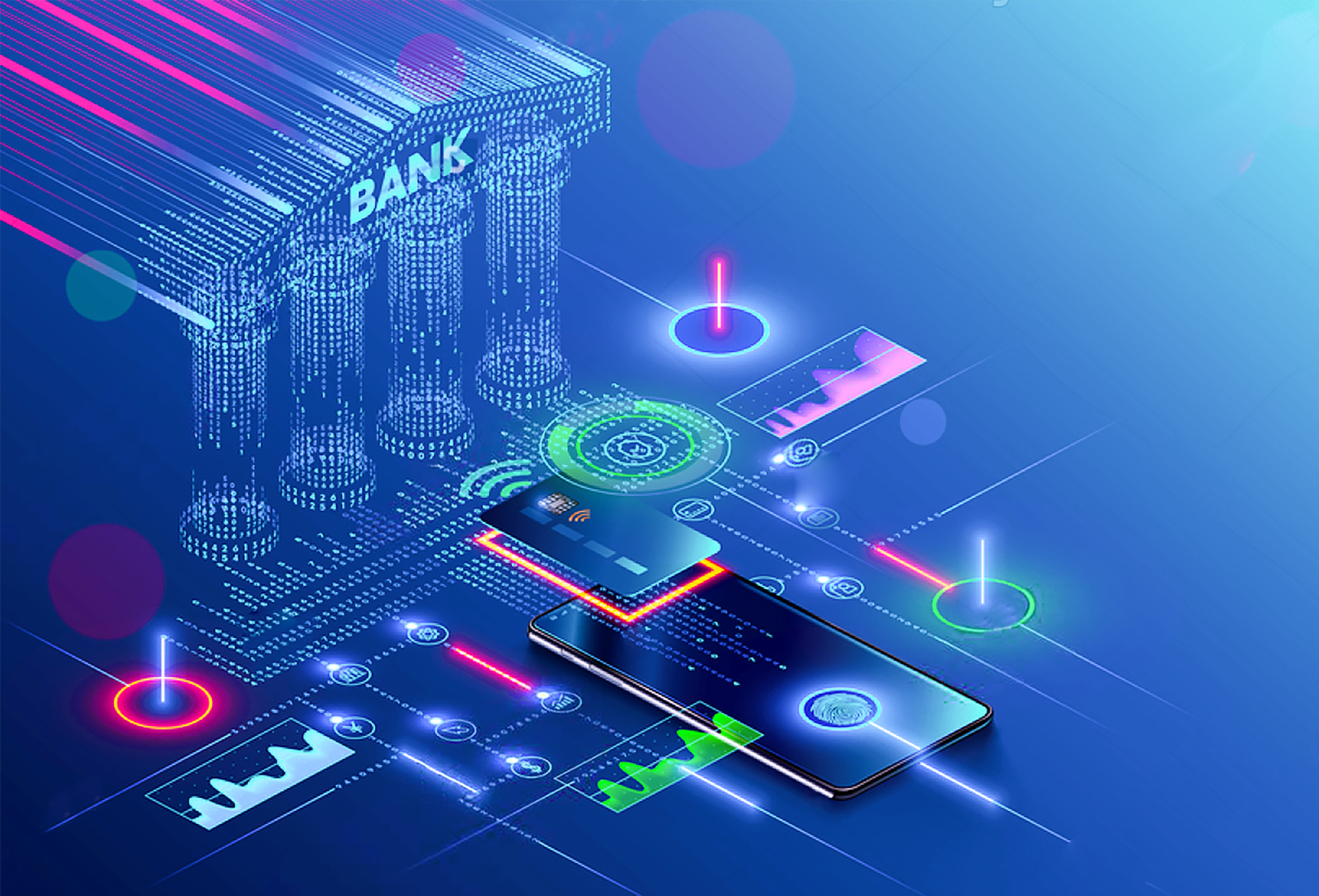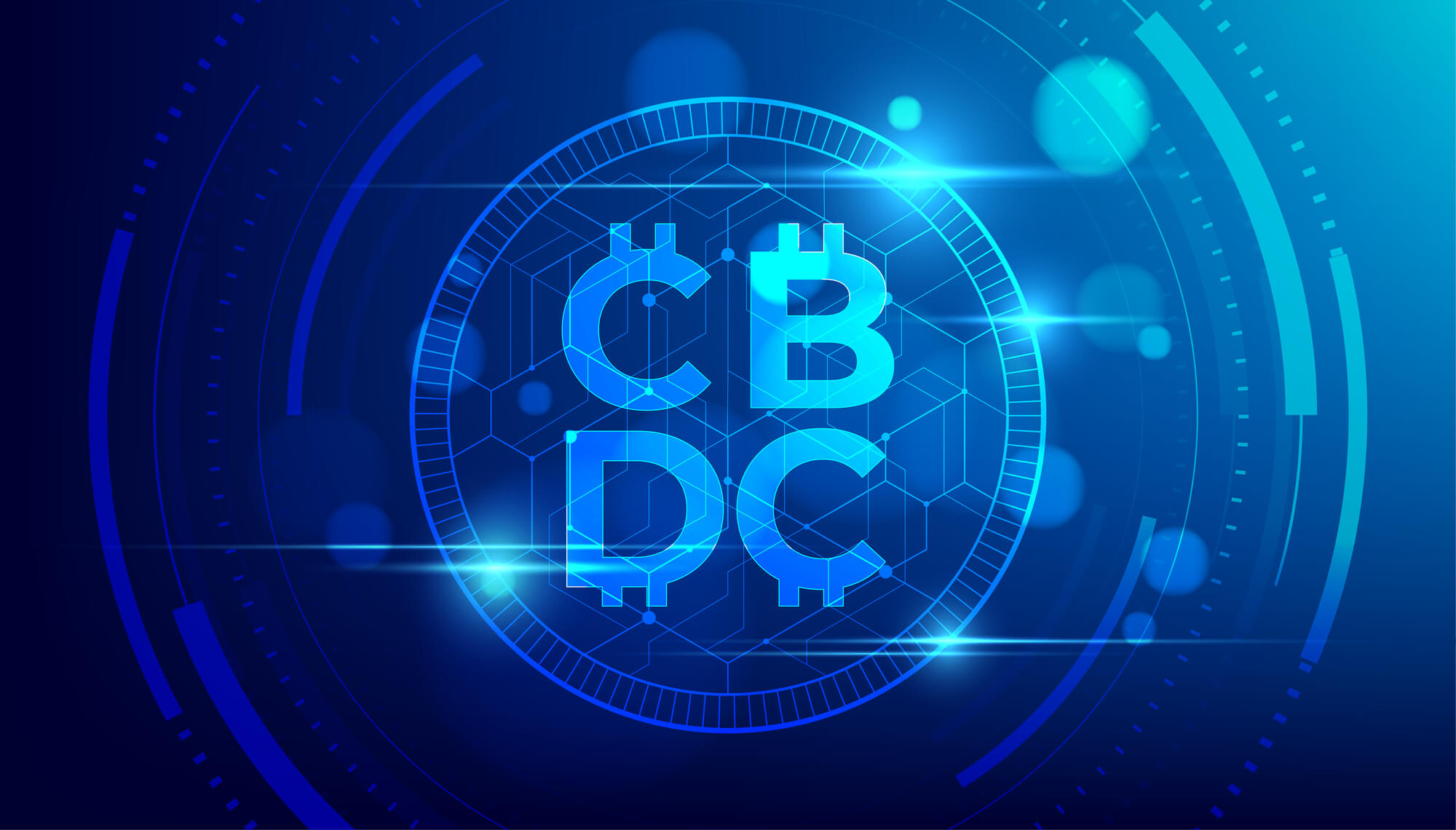
Table of Contents
Introduction
Finance – Finance has always been a crucial pillar of society, enabling economic growth, business expansion, and personal wealth management. However, in recent years, the landscape of finance has been undergoing rapid transformation due to technological advancements and shifting consumer behaviors. With the rise of artificial intelligence (AI), blockchain, decentralized finance (DeFi), and fintech solutions, the financial sector is evolving at an unprecedented pace.
This article explores the latest innovations in finance, their impact on everyday life, and how they are shaping the future of money.
1. The Rise of Digital Banking and Fintech

The financial landscape is undergoing a seismic shift. Traditional banking, once dominated by brick-and-mortar institutions, is being rapidly replaced by digital banking and fintech solutions that offer seamless, user-friendly, and innovative financial services. The rise of fintech companies has redefined how consumers access banking, loans, investments, and even everyday payments.
With artificial intelligence (AI), blockchain, and open banking leading the way, the fintech revolution is shaping the future of money and financial transactions. But what does this mean for consumers, businesses, and the economy as a whole? In this article, we explore the evolution of digital banking, the key drivers behind fintech’s rise, and the impact these innovations have on everyday life.
1. Understanding Digital Banking and Fintech
What Is Digital Banking?
Digital banking refers to financial services that are provided through digital platforms, eliminating the need for traditional physical bank branches. Consumers can access their accounts, make transactions, apply for loans, and manage investments online, often through mobile apps.
Key Features of Digital Banking:
24/7 account access and management
AI-powered customer support (chatbots)
Mobile-first banking experience
Instant money transfers and bill payments
Personalized financial insights and recommendations
What Is Fintech?
Financial technology, or fintech, refers to the integration of technology into financial services. Fintech companies leverage advanced digital solutions, such as blockchain, artificial intelligence, and big data, to create faster, more accessible, and cost-efficient alternatives to traditional banking services.
Popular Fintech Solutions Include:
Neobanks (online-only banks like Chime, N26, and Revolut)
Peer-to-peer lending platforms (such as LendingClub and Prosper)
Cryptocurrency exchanges (like Binance and Coinbase)
Buy Now, Pay Later (BNPL) services (such as Klarna and Afterpay)
Automated investing platforms (robo-advisors like Wealthfront and Betterment)
With fintech and digital banking working together, the financial ecosystem is becoming more inclusive, efficient, and tailored to consumer needs.
2. The Drivers Behind the Fintech Revolution
1. Changing Consumer Expectations
Today’s consumers expect speed, convenience, and personalization in every service they use—including banking. Millennials and Gen Z users, in particular, prefer mobile-first banking experiences over traditional bank visits.
Consumer Trends Driving Digital Banking Growth:
68% of consumers prefer using digital channels for financial transactions.
80% of Millennials report that they would switch banks for a better digital experience.
Mobile banking apps are now used by over 85% of smartphone owners.
2. Advancements in AI and Big Data
Artificial intelligence and machine learning play a crucial role in fintech innovation. These technologies enable:
Personalized banking experiences (AI-powered budgeting tools like Cleo and Mint)
Automated fraud detection (machine learning identifies suspicious transactions in real-time)
Robo-advisors that help users invest efficiently without human intervention
3. The Growth of Open Banking
Open banking allows financial institutions to share consumer financial data securely with third-party fintech companies, promoting innovation and competition.
How Open Banking Benefits Consumers:
Easier access to financial management tools
Faster loan approvals and credit scoring
Seamless integration of banking and fintech services
4. Increased Trust in Digital Transactions
With improved cybersecurity measures, consumers are more willing to embrace digital banking and online payments. Advanced encryption, biometric authentication, and blockchain-based security have minimized risks while enhancing trust in digital financial services.
3. The Impact of Digital Banking and Fintech on Society
1. Financial Inclusion: Banking the Unbanked
One of fintech’s greatest contributions is its role in promoting financial inclusion. Traditional banks often exclude low-income individuals due to strict credit requirements and high fees. However, fintech platforms offer alternative solutions, including:
Mobile-based banking for underserved populations
Alternative credit scoring models using AI
Low-cost international money transfers for migrant workers
2. The Rise of Digital Payments and Cashless Societies
With the rise of digital wallets (e.g., Apple Pay, Google Pay) and mobile payment platforms (e.g., Venmo, PayPal), the need for physical cash is decreasing. Countries like Sweden and China are moving toward becoming fully cashless economies.
3. The Impact on Traditional Banks
Banks are now forced to adapt or risk losing customers to fintech competitors. Many traditional banks are partnering with fintech startups or launching their own digital banking solutions to stay relevant.
Examples of Traditional Banks Embracing Fintech:
Goldman Sachs launched Marcus, a digital banking service.
JPMorgan Chase invested in blockchain technology for faster payments.
HSBC integrated AI-driven financial planning tools into its app.
4. Challenges and Risks in the Fintech Industry
1. Regulatory Uncertainty
Governments are still adapting to the rapid growth of fintech. The lack of uniform regulations across countries can create compliance challenges for fintech companies operating internationally.
2. Cybersecurity Threats
With financial services going digital, cybersecurity threats such as data breaches, phishing scams, and identity theft are increasing. Fintech companies must continuously invest in security technologies to protect consumer data.
3. Digital Divide and Accessibility Issues
Despite fintech’s promise of financial inclusion, some populations—particularly the elderly and those in remote areas—still struggle to access digital banking services due to a lack of internet infrastructure or digital literacy.
4. The Risks of Algorithmic Bias
AI-driven financial tools, such as credit scoring algorithms, can unintentionally reinforce biases if not properly managed. Fintech companies must ensure fairness and transparency in their AI models.
5. The Future of Digital Banking and Fintech
1. The Expansion of Decentralized Finance (DeFi)
Decentralized Finance (DeFi) platforms are creating alternatives to traditional banking by offering blockchain-based financial services without intermediaries. As DeFi adoption grows, we could see more decentralized lending, borrowing, and trading platforms.
2. AI-Powered Hyper-Personalization
Banks and fintech companies will leverage AI even further to create hyper-personalized financial services. Expect to see AI-powered investment recommendations, automated savings plans, and real-time fraud prevention solutions.
3. The Role of Central Bank Digital Currencies (CBDCs)
Governments worldwide are exploring the development of Central Bank Digital Currencies (CBDCs) to complement or replace physical cash. Countries like China, the US, and the EU are actively researching or piloting CBDC projects.
4. Biometric and Voice-Based Banking
Future banking services will likely integrate more biometric and voice recognition features, allowing users to authenticate transactions through facial recognition or voice commands instead of passwords.
5. The Continued Integration of Blockchain Technology
Beyond cryptocurrency, blockchain is expected to play a more significant role in financial security, fraud prevention, and even digital identity verification.
The rise of digital banking and fintech is more than just a trend—it’s a fundamental shift in the financial industry that is reshaping how people access and manage their money. From AI-powered banking to decentralized finance, the financial sector is undergoing a massive transformation that prioritizes efficiency, security, and accessibility.
As fintech continues to evolve, businesses and consumers alike must stay informed and embrace these changes to benefit from the convenience and innovation that digital finance offers. The future of banking is digital, and the fintech revolution is only just beginning.
By adapting to these innovations, we can move toward a more inclusive, efficient, and technologically advanced financial world.
2. The Evolution of Cryptocurrencies and Blockchain Technology

Cryptocurrencies and blockchain technology have transformed the global financial landscape, introducing decentralized and trustless systems that challenge traditional financial institutions. From the creation of Bitcoin in 2009 to the rise of thousands of altcoins and smart contract platforms, digital currencies have reshaped how people perceive and interact with money.
Blockchain, the underlying technology behind cryptocurrencies, has expanded far beyond financial applications, influencing sectors such as healthcare, supply chain management, and even governance. As we move toward a more digitized world, understanding the evolution of cryptocurrencies and blockchain technology is crucial for businesses, investors, and everyday consumers.
In this article, we explore the origins, current state, and future of cryptocurrencies and blockchain technology, analyzing their impact on society and the financial system.
1. The Origins of Cryptocurrencies and Blockchain
1.1 The Birth of Bitcoin and Decentralized Finance
The modern cryptocurrency movement began with Bitcoin, introduced in 2008 through a whitepaper titled “Bitcoin: A Peer-to-Peer Electronic Cash System,” authored by the pseudonymous Satoshi Nakamoto. Bitcoin’s primary innovation was its ability to facilitate trustless transactions without the need for a central authority, using blockchain technology to ensure transparency and security.
Key Features of Bitcoin:
Decentralization: No single entity controls the Bitcoin network.
Transparency: All transactions are publicly recorded on the blockchain.
Immutability: Transactions cannot be altered once confirmed.
Limited Supply: Bitcoin has a maximum supply of 21 million coins, making it a deflationary asset.
Bitcoin’s emergence coincided with the 2008 financial crisis, where distrust in centralized banks and financial institutions led to increased interest in alternative financial systems.
1.2 The Expansion of Altcoins and Smart Contracts
Following Bitcoin’s success, various alternative cryptocurrencies (altcoins) emerged, each introducing new features and use cases:
Litecoin (LTC): Created in 2011 as a “lighter” version of Bitcoin with faster transaction times.
Ripple (XRP): Designed for cross-border payments and adopted by financial institutions.
Ethereum (ETH): Launched in 2015, Ethereum introduced smart contracts, self-executing agreements that revolutionized decentralized applications (dApps).
Ethereum’s introduction of smart contracts paved the way for Decentralized Finance (DeFi) and Non-Fungible Tokens (NFTs), expanding blockchain applications beyond payments.
2. The Growth of Blockchain Technology Beyond Cryptocurrencies
2.1 The Fundamentals of Blockchain
A blockchain is a distributed ledger technology (DLT) that records transactions across multiple computers. Unlike traditional databases, blockchain operates through a decentralized network, ensuring that no single entity has control over the system.
Core Elements of Blockchain:
Blocks: Containers of transaction data.
Nodes: Participants maintaining the network.
Consensus Mechanisms: Methods to validate transactions (Proof of Work, Proof of Stake).
2.2 Key Blockchain Innovations and Applications
While initially developed for Bitcoin, blockchain technology has evolved into a transformative tool across multiple industries:
Supply Chain Management: Companies like IBM and Walmart use blockchain to enhance transparency and traceability in logistics.
Healthcare: Medical records are securely stored on blockchain networks, preventing data breaches.
Voting Systems: Blockchain-based voting ensures fraud-proof elections with immutable records.
Real Estate: Smart contracts streamline property transactions, reducing the need for intermediaries.
2.3 The Rise of DeFi and NFT Marketplaces
DeFi platforms like Uniswap, Aave, and Compound offer decentralized lending, borrowing, and trading services without traditional banks. Meanwhile, the NFT market, led by platforms such as OpenSea and Rarible, enables digital ownership of unique assets, reshaping industries like art, gaming, and entertainment.
3. The Regulatory Landscape and Challenges Facing Cryptocurrencies
3.1 Government Regulations and Adoption
As cryptocurrencies gain mainstream adoption, governments worldwide are grappling with how to regulate them. Some countries, such as El Salvador, have embraced Bitcoin as legal tender, while others, like China, have imposed strict bans on cryptocurrency transactions.
Key Regulatory Trends:
U.S. and EU: Focus on investor protection and anti-money laundering (AML) policies.
Asia-Pacific: Varying approaches, from outright bans to regulatory sandboxes for innovation.
Latin America: Growing adoption, with countries exploring Central Bank Digital Currencies (CBDCs).
3.2 Security Risks and Scalability Issues
Despite its advantages, blockchain technology faces several challenges:
Security Risks: Hacks, such as the Mt. Gox exchange hack and DeFi exploits, highlight vulnerabilities.
Scalability: Bitcoin and Ethereum struggle with high transaction fees and slow processing times.
Environmental Impact: Proof-of-Work mining consumes significant energy, prompting the shift to eco-friendly alternatives like Ethereum 2.0’s Proof-of-Stake (PoS).
4. The Future of Cryptocurrencies and Blockchain Technology
4.1 The Evolution of Bitcoin and Ethereum
Bitcoin continues to solidify its position as “digital gold,” with institutional investors and hedge funds increasingly adding BTC to their portfolios. Ethereum, on the other hand, is transitioning to Ethereum 2.0, enhancing scalability and reducing energy consumption.
4.2 The Role of Central Bank Digital Currencies (CBDCs)
Governments are developing CBDCs to merge the benefits of digital currencies with regulatory oversight. Examples include:
China’s Digital Yuan (e-CNY)
The European Central Bank’s Digital Euro
The U.S. Federal Reserve’s exploration of a Digital Dollar
CBDCs aim to modernize payments while maintaining financial stability.
4.3 The Emergence of Web3 and the Metaverse
Blockchain technology plays a pivotal role in the development of Web3, a decentralized internet built on blockchain principles. Web3 applications integrate cryptocurrencies, DeFi, and NFTs into digital ecosystems, enabling users to control their data and digital identities.
Metaverse Projects Utilizing Blockchain:
Decentraland (MANA) and The Sandbox (SAND): Virtual worlds powered by blockchain.
Axie Infinity (AXS): A play-to-earn blockchain-based gaming ecosystem.
4.4 The Shift Toward Sustainable Blockchain Solutions
As environmental concerns rise, projects are exploring energy-efficient consensus mechanisms such as:
Ethereum 2.0’s Proof-of-Stake (PoS)
Cardano’s eco-friendly blockchain design
Layer 2 scaling solutions like Polygon (MATIC) to reduce transaction fees and energy use
Cryptocurrencies and blockchain technology have evolved from niche innovations into mainstream financial instruments and technological frameworks. Despite challenges such as regulatory scrutiny and security threats, the potential of decentralized systems remains vast.
Key Takeaways:
Bitcoin and Ethereum continue to dominate, but altcoins and DeFi projects offer new opportunities.
Blockchain applications extend beyond finance, impacting industries like healthcare, supply chains, and governance.
Regulations will shape the future of crypto adoption, determining how governments integrate digital assets into financial systems.
Web3, NFTs, and the Metaverse are paving the way for a decentralized digital future.
Sustainability and scalability will be critical for long-term blockchain adoption.
The evolution of cryptocurrencies and blockchain technology is far from over. As we move forward, innovation, regulation, and adoption will define the next chapter in this groundbreaking technological revolution.
3. Artificial Intelligence in Finance
AI-Driven Fraud Detection and Risk Management
Financial fraud is a growing concern, with cybercriminals using sophisticated tactics to exploit security vulnerabilities. AI-powered fraud detection systems help banks and financial institutions monitor transactions in real time, identify suspicious behavior, and prevent fraud before it happens.
How AI improves financial security:
Machine Learning Algorithms: Detect anomalies and flag suspicious activities.
Biometric Authentication: Facial recognition and fingerprint scanning enhance security.
Automated Risk Assessments: AI evaluates loan applications and credit scores with greater accuracy.
Personalized Financial Planning with AI
AI is transforming wealth management by offering tailored investment strategies. Robo-advisors use machine learning to analyze market trends and construct optimized investment portfolios.
Benefits of AI in investment management:
Eliminates human bias: AI-driven insights are purely data-driven.
Reduces investment costs: Robo-advisors charge lower fees compared to traditional financial advisors.
Enhances accessibility: Anyone can access professional-grade investment tools.
4. The Impact of Central Bank Digital Currencies (CBDCs)

Governments Enter the Digital Currency Space
As cryptocurrencies gain popularity, central banks are exploring the idea of issuing their own digital currencies. Central Bank Digital Currencies (CBDCs) aim to provide the benefits of digital payments while maintaining government control over monetary policy.
Countries exploring CBDCs:
China: The Digital Yuan is already being tested for retail transactions.
European Union: The European Central Bank is developing the Digital Euro.
United States: The Federal Reserve is considering a digital dollar to enhance financial inclusion.
How CBDCs Could Change the Financial System
CBDCs could make transactions faster, more secure, and reduce reliance on cash. However, concerns about privacy, government surveillance, and the potential displacement of traditional banks remain key challenges.
5. The Future of Sustainable Finance
ESG Investing and Green Finance
Environmental, Social, and Governance (ESG) investing has gained momentum as investors prioritize sustainability. Companies with strong ESG credentials are attracting more capital, influencing corporate policies, and driving positive environmental change.
Key trends in sustainable finance:
Green Bonds: Governments and corporations issue bonds to fund eco-friendly projects.
Carbon Credits: Businesses offset carbon emissions by purchasing credits.
Impact Investing: Investors focus on generating social and environmental benefits alongside financial returns.
How Technology Supports Sustainable Finance
AI and blockchain are playing a crucial role in verifying ESG metrics and ensuring transparency. Smart contracts automate carbon credit trading, while AI-powered analytics help investors assess sustainability risks.
Conclusion: What Lies Ahead for Finance?
The financial landscape is evolving rapidly, driven by digital banking, AI, cryptocurrencies, and sustainable finance initiatives. While these innovations offer numerous benefits, they also present challenges such as regulatory concerns, security risks, and financial inclusion issues.
As we move toward a more digitized and decentralized financial future, adaptability will be key for businesses and individuals alike. Whether it’s embracing AI-powered financial tools, exploring DeFi opportunities, or supporting green finance initiatives, the future of finance holds exciting possibilities that will shape the global economy for years to come.
By staying informed and leveraging these innovations, individuals and businesses can navigate the changing financial ecosystem with confidence and success.










:max_bytes(150000):strip_icc()/Term-Definitions_Digital-Marketing-5ae6ea1aee934b02a94a1a4d9401443d.jpg)




